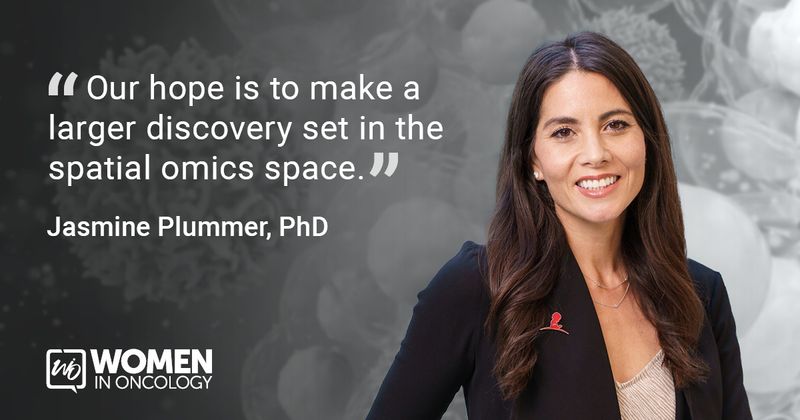New center director says spatial omics has vast potential in pediatric oncology
St. Jude Children’s Research Hospital has appointed Jasmine Plummer, PhD, as the first-ever director of the new Center for Spatial Omics.
In her new role as director, Plummer will work to lead the new center, which is part of the $12.9 billion commitment of the 2022 to 2027 St. Jude Strategic Plan, in discovering novel ways of measuring gene expression while preserving cellular organization, according to a press release.

Photo credit: St. Jude Children’s Research Hospital.
“It is an exciting time in science where spatial technology is poised to allow us, not simply to see within a tissue, but within a single cell,” Plummer said in the release. “Spatial omics offers huge potential for discovery in disease development and treatment, and I am thrilled to build a center primed to propel discovery using the vast tissue resources at St. Jude.”
Plummer spoke with Healio about the importance of the new center, how her career has prepared her for this new role and what she seeks to accomplish.
Healio: What is the importance of this new center?
Plummer: For years now, there has been a great need to investigate tissue — where most cancers start — and that is reflective of tissue banks around the world that have been storing these data and studying tissue for a long time. The idea for this new center stemmed from two independent camps during the last strategic initiatives of St. Jude Children’s Research Hospital, where it wasn’t only canonical researchers asking for it, but really for the first time a union of pathologists and other experts who examine tissue to have this larger collective effort to go into tissues and have a greater understanding of disease. Given that we are now in the world of omics, genomics and sequencing and are able to look at many things at once, we are set in a very clear place in the field to finally be able to apply the technologies. With the center, our hope is to make a larger discovery set in the spatial omics space.
Healio: How has your career so far prepared you for this role?
Plummer: My career path would normally be a bit shaky for most, given I started in development and then as a principal investigator in a professorial rank, sort of moving through my own research in cancer. But this experience has primed me to take on a director role because I was already a codirector of genomics on the west coast.
In that role, I oversaw many areas, including sample preparation, bulk and single-cell genomics and sequencing. The bandwidth and the breadth by which I needed to understand the new technology has really primed me to being a director specific to this technology and will help me to lead the cause, with a larger team behind me for support.
Healio: What challenges do you and colleagues plan to work to overcome?
Plummer: Spatial omics has been around since the 1950s, so we have used it to diagnose cancers for a while now. The technology is now being commercialized, and most in the field agree that it works and is amazing. The current challenge is in testing the waters and taking the commercialization of products and putting it to the test in real-life tissues from banks and human samples that we have saved so that we can see in real-world settings how applicable this is going to be in terms of reproducibility.
Healio: Looking ahead, what do you hope to accomplish in this role within the coming years?
Plummer: I have this dream, and it is a large dream. What excited me and brought me to St. Jude is that it has been instrumental in contributing to the Pediatric Tumor Atlas.
Tumor sequencing has been its bread and butter and something that it has really worked hard on within its infrastructure. What brought me to St. Jude was the idea of that infrastructure, to go into tissue research and make a contribution in the same sense to a larger, broader global community, where we can go in and do what we’ve done in the past with pediatric tumors, but really launch that in a way that we can see that spatially and see the tumors themselves. My hope is to make sense of all the data that we have gathered in the past and build upon that data for new discoveries and new clinical applications for better drugs and better treatments for our pediatric patients with cancer.
Healio: Is there anything else that you would like to mention?
Plummer: Interpreting this type of data takes a team, and another initiative that I am very proud of at St. Jude is that it has truly backed me in this new role and helped to promote me in this new position to see the technology move forward.
For more information:
Jasmine Plummer, PhD, can be reached on Twitter at @DrJasPlummer.

